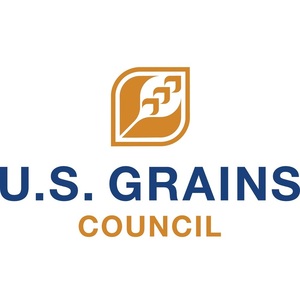USGC publishes new guide for high-protein corn co-products

April 13, 2023
BY U.S. Grains Council
The U.S. Grains Council recently released a handbook about new and evolving high-protein corn co-products produced by the U.S. ethanol industry. It is meant to update international customers on the nutritional profiles of these products and their applications in animal feed.
The Council is proud and excited to have led the creation of the handbook, which will articulate the differences between traditional distiller’s dried grains with solubles (DDGS) and newer, higher-protein corn co-products.
“Considering the increasing popularity and usages of U.S. DDGS, plus the new high-value corn co-products now entering the market, we believe this handbook will help buyers and end users stay informed on these high-quality feed ingredients,” said Kurt Shultz, USGC senior director of global strategies. “The Council has a robust catalog of information about U.S. corn co-products that will help international producers incorporate them into their animal rations.”
Advertisement
Advertisement
The high-protein handbook is a supplement to the Council’s existing series of DDGS user handbooks, which have been a resource for U.S. DDGS importers around the world since 2007.
The guide was written by Jerry Shurson, a professor of animal nutrition at the University of Minnesota. Shurson also authored all four editions of the Council’s standard DDGS handbook, providing a consistent and digestible library of information about U.S. feed product options.
Contents of the handbook include chapters explaining the nutritional composition of high-protein corn co-products and details about feeding applications for a wide variety of animals, as well as in aquaculture diets. A chapter is also dedicated to wet and dried corn fiber/bran and solubles (CBS), de-oiled DDGS, and corn distillers oil (CDO) to give buyers and end-users even more information about the latest developments in U.S. corn co-products.
Advertisement
Advertisement
“In periods of higher global grain prices, U.S. corn co-products are one tool to lower feed costs,” Shultz said. “There are many excellent alternative feed ingredients produced by the U.S. ethanol industry. When included in properly formulated feeds, it results in outstanding animal health, performance and feed product quality.”
View the new high-protein handbook or DDGS user’s handbook.
Related Stories
Neste Corp. on July 24 released second quarter results, reporting record quarterly renewable product sales volumes despite weaker margins. SAF sales were up nearly 80% when compared to the first quarter of 2025.
Valero Energy Corp. on July 24 released second quarter results, reporting a profitable three-month period for its ethanol segment. The renewable diesel segment posted a loss, but the company’s new sustainable aviation fuel (SAF) unit operated well.
The IRS on July 21 published a notice announcing the 2025 calendar-year inflation adjustment factor for the Section 45Z clen fuel production credit. The resulting adjustment boosts maximum the value of the credit by approximately 6%.
U.S. Secretary of Agriculture Brooke L. Rollins today announced the reorganization of the USDA, refocusing its core operations to better align with its founding mission of supporting American farming, ranching, and forestry.
The U.S. Department of Energy’s Office of Energy Efficiency and Renewable Energy is soliciting public comments on a preliminary plan for determining provisional emissions rates (PER) for the purposes of the 45Z clean fuel production credit.
Upcoming Events










